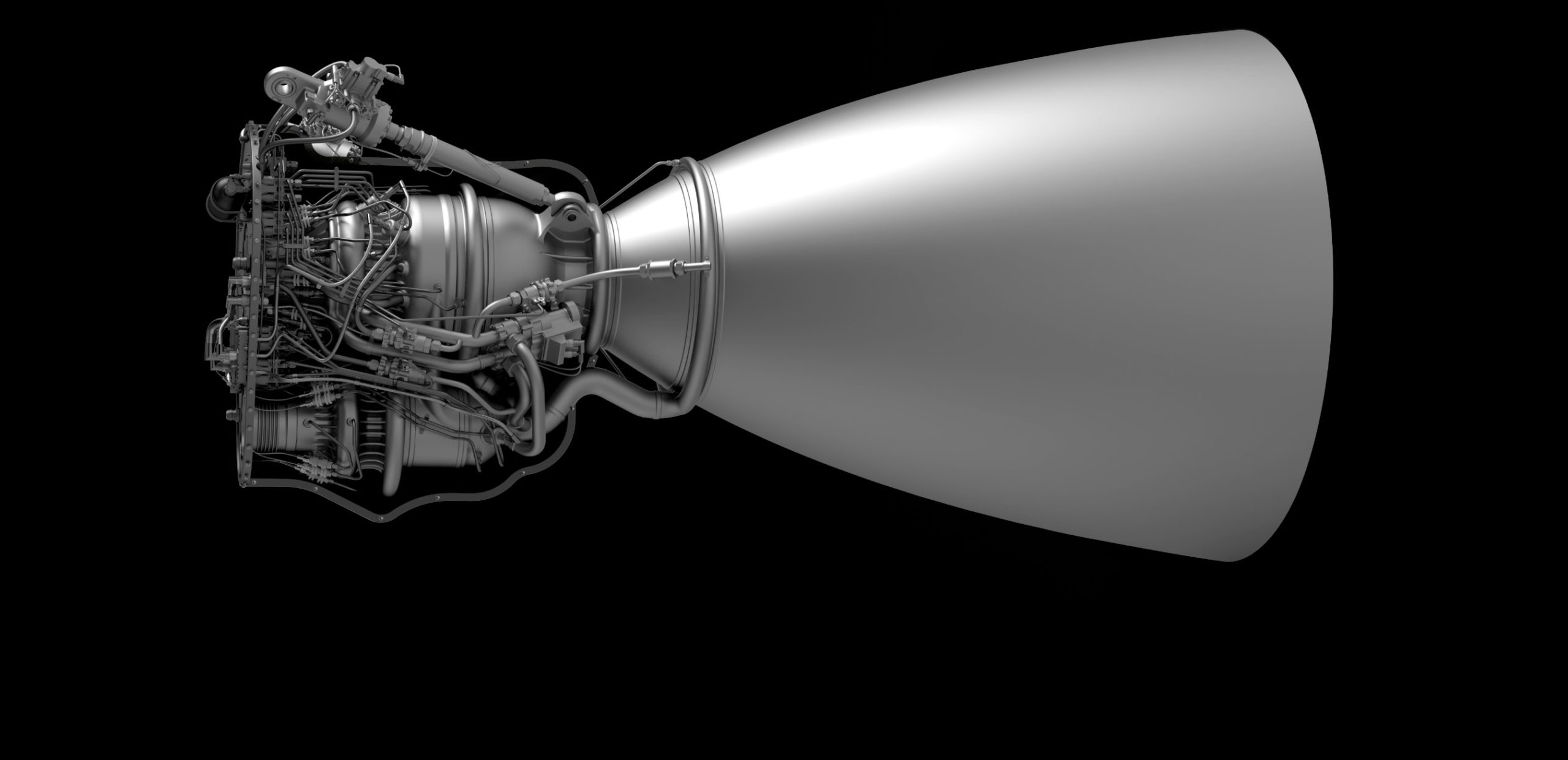
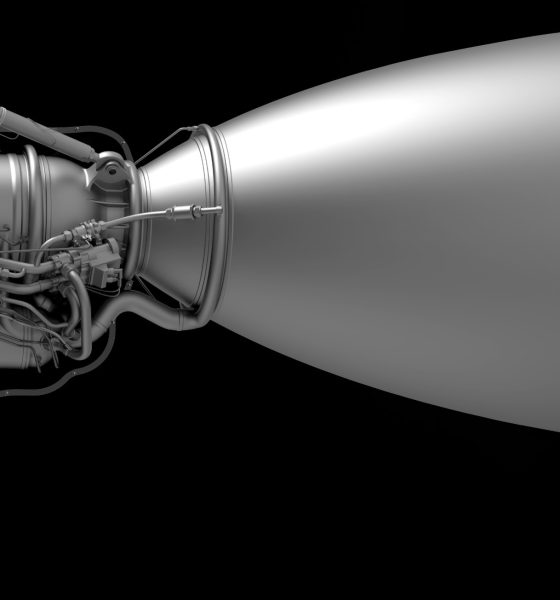
News
SpaceX’s Starship Raptor Vacuum engine plans laid out by CEO Elon Musk
Elon Musk says that SpaceX Starship engine upgrades are on track to begin static fire tests of a Raptor Vacuum variant as few as a “couple months” from now.
Designed to enable more efficient performance in thin atmosphere or vacuum, Musk admitted that the first version(s) of Raptor Vacuum (RVac) will likely be a compromise between efficiency and speed of development. Nevertheless, the faster SpaceX can prepare Raptor Vacuum for flight, the easier it will be for Starship to begin serious (sub)orbital flight tests.
As it turns out, SpaceX’s first and only official render of Raptor – published in September 2016 – showed the engine’s vacuum-optimized variant. In the years since, CEO Elon Musk has vacillated between keeping the vacuum engines as a central Starship feature and simply replacing them with regular sea level Raptors to expedite the spacecraft’s debut. The 2016 and 2017 vehicles featured a mixture of vacuum and sea-level engines, whereas Musk revealed a vehicle with sea-level engines only in 2018.
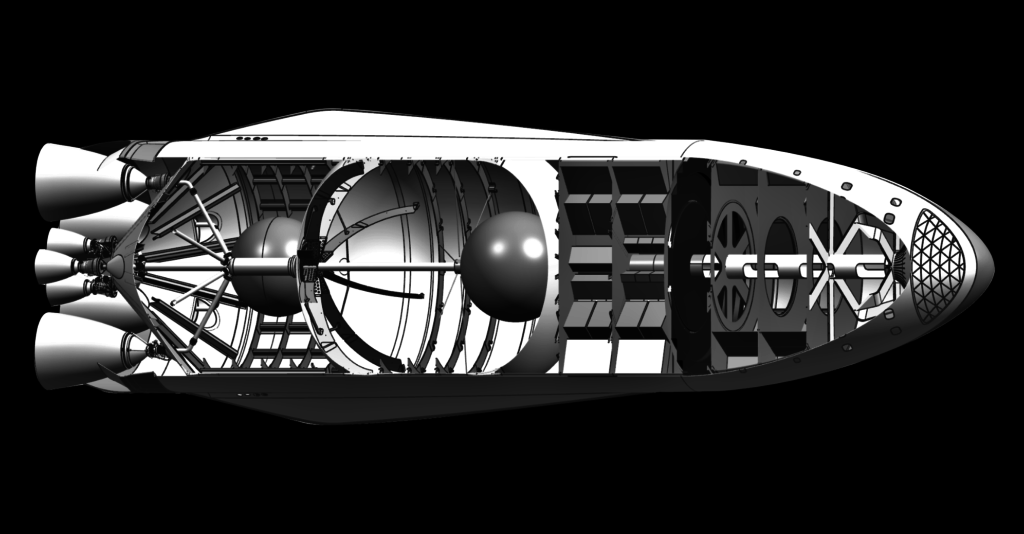
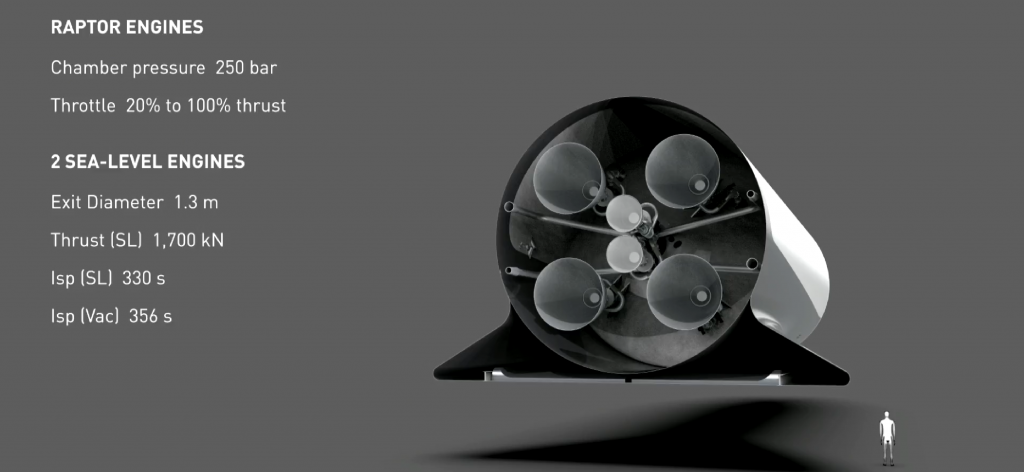
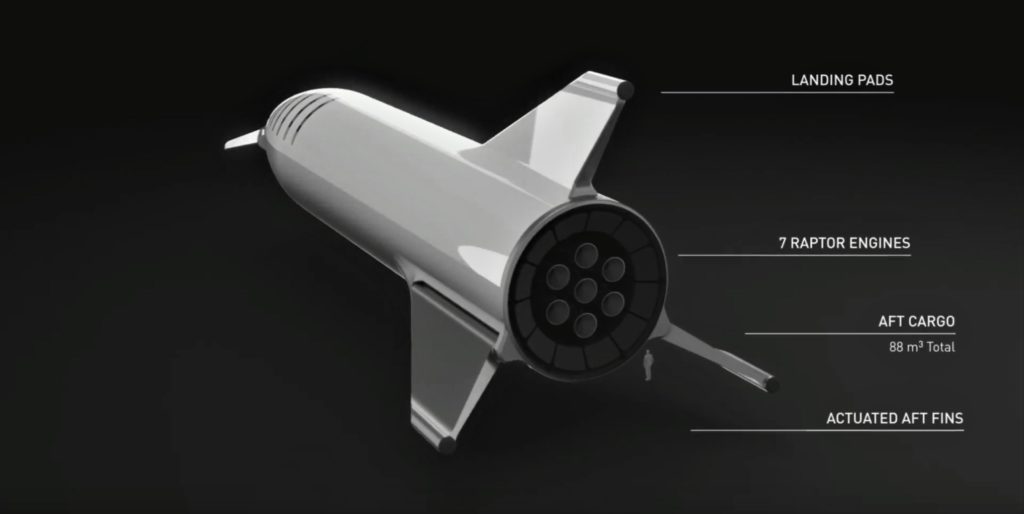
Perhaps less than a month after Musk’s September 2018 presentation, the SpaceX CEO made the decision to radically redesign the vehicle – newly christened Starship and Super Heavy – by moving from a carbon composite aerostructure to stainless steel. At first, the seven SL Raptors remained a part of the design, but Musk took to Twitter in 2019 to indicate that SpaceX had changed gears again and had reprioritized Raptor Vacuum development.
This came as a bit of surprise and it should go without saying that there’s a significant chance that Musk/SpaceX will oscillate in the opposite direction once again before Raptor Vacuum is actually ready for flight. This time, though, Musk has sketched out a development schedule and strategy that suggests SpaceX is much more serious this time.
Most notably, Musk claims that the first Raptor Vacuum prototype could be ready for static fire testing just a “couple months” from now, an immensely ambitious schedule for any large liquid rocket engine development program. Nevertheless, Musk did indicate that the “V1.0” Raptor Vacuum design would be significantly compromised and “suboptimal”, an intentional decision to prioritize the engine’s “speed of development”.
Even then, Musk believes that the first variant – featuring a shortened bell nozzle – could still be up to 12% more efficient than sea level Raptors and thus already 70-80% of the way to the physical limit of methane-oxygen rocket efficiency.
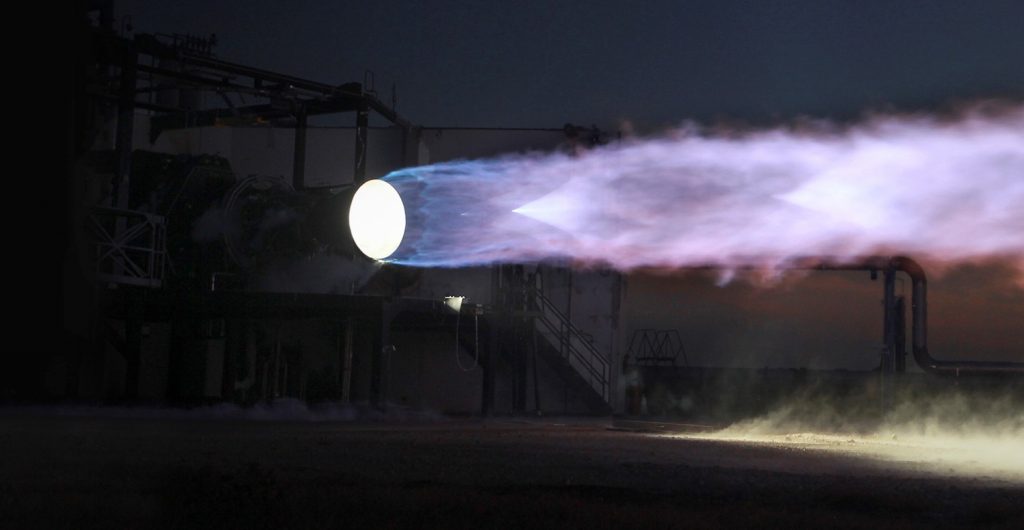
On a positive note, shrinking V1.0 Raptor Vacuum’s nozzle a bit from its nominal length will likely mean that SpaceX can static fire fully-integrated engines at its McGregor, TX test facilities, critical for speedy development. If not, the company has experience with alternatives through Merlin Vacuum, which can only be tested on the ground with its lengthy nozzle detached. This method just makes it dramatically harder to optimize a vacuum nozzle design, as full-scale, flight-like testing is nearly impossible if a given vacuum engine can’t be tested on the ground with said nozzle installed.
Vacuum engines need such large and unwieldy nozzles in order to make them as efficient as possible. In a very simplistic sense, a rocket engine nozzle directs the flow of superheated, ultrafast gases in order to squeeze as much momentum transfer as possible out of available propellant. The lower the pressure of the surrounding atmosphere is, the more those gases will expand immediately after leaving the nozzle – giant vacuum nozzles simply try to harness the additional momentum available from that extra expansion. This is why rocket exhausts appear to spread and thin out as launch vehicles reach higher and higher altitudes.
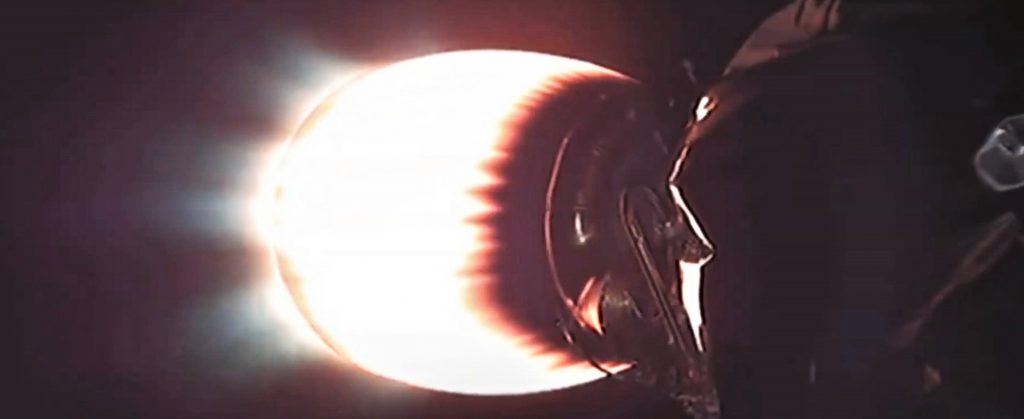
In this sense, the perfect theoretical vacuum nozzle is quite literally infinitely long. The job of vacuum rocket engineers is to find the perfect balance between that impractical theoretical perfection and the limits of real-world materials and dynamics. In theory, SpaceX’s sea-level Raptor engines have already been designed to operate in vacuum conditions, while the engine’s closed-cycle design and regeneratively (i.e. propellant) cooled nozzle should apply well to a vacuum design.
If SpaceX is lucky, there will be few roadblocks in the way of simply lengthening a SL Raptor-style nozzle and calling it a day, in which case it would be impressive but not all that surprising if SpaceX is actually able to begin RVac testing before the end of 2019. Once a rough V1.0 engine is in place, the process of optimizing efficiency can be done slowly and methodically, all while exploiting an unprecedented wealth of data from flight and orbit-tested Raptor Vacuum engines.
Check out Teslarati’s Marketplace! We offer Tesla accessories, including for the Tesla Cybertruck and Tesla Model 3.

News
Tesla FSD fleet is nearing 7 billion total miles, including 2.5 billion city miles
As can be seen on Tesla’s official FSD webpage, vehicles equipped with the system have now navigated over 6.99 billion miles.

Tesla’s Full Self-Driving (Supervised) fleet is closing in on almost 7 billion total miles driven, as per data posted by the company on its official FSD webpage.
These figures hint at the massive scale of data fueling Tesla’s rapid FSD improvements, which have been quite notable as of late.
FSD mileage milestones
As can be seen on Tesla’s official FSD webpage, vehicles equipped with the system have now navigated over 6.99 billion miles. Tesla owner and avid FSD tester Whole Mars Catalog also shared a screenshot indicating that from the nearly 7 billion miles traveled by the FSD fleet, more than 2.5 billion miles were driven inside cities.
City miles are particularly valuable for complex urban scenarios like unprotected turns, pedestrian interactions, and traffic lights. This is also the difference-maker for FSD, as only complex solutions, such as Waymo’s self-driving taxis, operate similarly on inner-city streets. And even then, incidents such as the San Francisco blackouts have proven challenging for sensor-rich vehicles like Waymos.
Tesla’s data edge
Tesla has a number of advantages in the autonomous vehicle sector, one of which is the size of its fleet and the number of vehicles training FSD on real-world roads. Tesla’s nearly 7 billion FSD miles then allow the company to roll out updates that make its vehicles behave like they are being driven by experienced drivers, even if they are operating on their own.
So notable are Tesla’s improvements to FSD that NVIDIA Director of Robotics Jim Fan, after experiencing FSD v14, noted that the system is the first AI that passes what he described as a “Physical Turing Test.”
“Despite knowing exactly how robot learning works, I still find it magical watching the steering wheel turn by itself. First it feels surreal, next it becomes routine. Then, like the smartphone, taking it away actively hurts. This is how humanity gets rewired and glued to god-like technologies,” Fan wrote in a post on X.
News
Tesla starts showing how FSD will change lives in Europe
Local officials tested the system on narrow country roads and were impressed by FSD’s smooth, human-like driving, with some calling the service a game-changer for everyday life in areas that are far from urban centers.

Tesla has launched Europe’s first public shuttle service using Full Self-Driving (Supervised) in the rural Eifelkreis Bitburg-Prüm region of Germany, demonstrating how the technology can restore independence and mobility for people who struggle with limited transport options.
Local officials tested the system on narrow country roads and were impressed by FSD’s smooth, human-like driving, with some calling the service a game-changer for everyday life in areas that are far from urban centers.
Officials see real impact on rural residents
Arzfeld Mayor Johannes Kuhl and District Administrator Andreas Kruppert personally tested the Tesla shuttle service. This allowed them to see just how well FSD navigated winding lanes and rural roads confidently. Kruppert said, “Autonomous driving sounds like science fiction to many, but we simply see here that it works totally well in rural regions too.” Kuhl, for his part, also noted that FSD “feels like a very experienced driver.”
The pilot complements the area’s “Citizen Bus” program, which provides on-demand rides for elderly residents who can no longer drive themselves. Tesla Europe shared a video of a demonstration of the service, highlighting how FSD gives people their freedom back, even in places where public transport is not as prevalent.
What the Ministry for Economic Affairs and Transport says
Rhineland-Palatinate’s Minister Daniela Schmitt supported the project, praising the collaboration that made this “first of its kind in Europe” possible. As per the ministry, the rural rollout for the service shows FSD’s potential beyond major cities, and it delivers tangible benefits like grocery runs, doctor visits, and social connections for isolated residents.
“Reliable and flexible mobility is especially vital in rural areas. With the launch of a shuttle service using self-driving vehicles (FSD supervised) by Tesla in the Eifelkreis Bitburg-Prüm, an innovative pilot project is now getting underway that complements local community bus services. It is the first project of its kind in Europe.
“The result is a real gain for rural mobility: greater accessibility, more flexibility and tangible benefits for everyday life. A strong signal for innovation, cooperation and future-oriented mobility beyond urban centers,” the ministry wrote in a LinkedIn post.
News
Tesla China quietly posts Robotaxi-related job listing
Tesla China is currently seeking a Low Voltage Electrical Engineer to work on circuit board design for the company’s autonomous vehicles.

Tesla has posted a new job listing in Shanghai explicitly tied to its Robotaxi program, fueling speculation that the company is preparing to launch its dedicated autonomous ride-hailing service in China.
As noted in the listing, Tesla China is currently seeking a Low Voltage Electrical Engineer to work on circuit board design for the company’s autonomous vehicles.
Robotaxi-specific role
The listing, which was shared on social media platform X by industry watcher @tslaming, suggested that Tesla China is looking to fill the role urgently. The job listing itself specifically mentions that the person hired for the role will be working on the Low Voltage Hardware team, which would design the circuit boards that would serve as the nervous system of the Robotaxi.
Key tasks for the role, as indicated in the job listing, include collaboration with PCB layout, firmware, mechanical, program management, and validation teams, among other responsibilities. The role is based in Shanghai.
China Robotaxi launch
China represents a massive potential market for robotaxis, with its dense urban centers and supportive policies in select cities. Tesla has limited permission to roll out FSD in the country, though despite this, its vehicles have been hailed as among the best in the market when it comes to autonomous features. So far, at least, it appears that China supports Tesla’s FSD and Robotaxi rollout.
This was hinted at in November, when Tesla brought the Cybercab to the 8th China International Import Expo (CIIE) in Shanghai, marking the first time that the autonomous two-seater was brought to the Asia-Pacific region. The vehicle, despite not having a release date in China, received a significant amount of interest among the event’s attendees.








